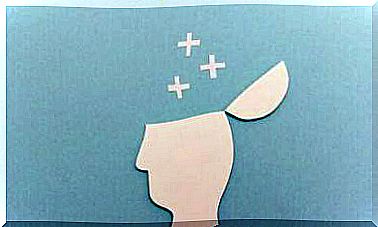How Do Sleep Disorders Affect Neurodegenerative Diseases?

Neurodegenerative diseases encompass a series of diseases in which neurons in the central nervous system cease to function or progressively die. This is the reason why different neurological signs and symptoms appear. In this article, we’ll talk about its relationship to sleep disorders.
This type of disease usually gets worse over time, in addition to having no cure. They can be genetic in origin or caused by a tumor or a stroke. In addition, they have a higher incidence in people who drink large amounts of alcohol or who are exposed to certain viruses or toxins.
Sleep disturbances can also influence neurodegenerative diseases. A study by researchers at the University of Toronto, Canada, reported that the REM sleep disorders could be an early warning sign of neurological disease. Let’s go deeper.

How do we dream?
Since the 1960s, scientists claim that the dreams occur during the REM phase and that the brainstem is a key region in control of them. This is located at the base of the brain and communicates with the hypothalamus to transition from wakefulness to sleep and vice versa.
Thus, a chain reaction begins by SubC glutamatergic neurons (which regulate the passage from REM to non-REM sleep), which take the name of the area of the brain in which they are found: the sub coeruleus or SubC. Ultimately, this reaction produces the release of the neurotransmitter GABA, which, in turn, reduces the level of arousal in the hypothalamus and brainstem.
This neurotransmitter is produced by GABAergic neurons, responsible for controlling the moment of onset of REM sleep, its effects and, mainly, the muscle paralysis that occurs during deep sleep.
When these cells are activated, a rapid transition to REM sleep takes place. The brainstem sends signals to relax the muscles and not move the limbs.
With that in mind, the researchers set out to examine in detail REM sleep disorders, including cataplexy, narcolepsy, and REM sleep behavior disorder.
REM sleep disorders
People with REM sleep disorders move their limbs or even get up and perform activities characteristic of the waking state while they are dreaming. In addition, some also speak or shout.
Thus, this disorder is considered a pathology when it endangers the sleeper or those around him. Sometimes the negative consequences of the problem (such as self-harm or harm to one’s partner during sleep) prompt the diagnosis.
The good news is that REM sleep disorder can usually be successfully treated.
the phases of sleep
What we call “sleep” implies transitions between three different states : wakefulness, REM sleep and NREM sleep. There are a variety of characteristics that define each state, but to understand the REM sleep behavior disorder, it is important to know what happens during it.
During this state, the electrical activity of the brain resembles the electrical activity observed during wakefulness. Although neurons during REM sleep function very similarly during the waking period, REM sleep is characterized by temporary muscle paralysis.
In some sleep disorders, such as narcolepsy, parasomnias or REM sleep behavior disorder, the distinctions between these different states become blurred. It is believed that the neurological “barriers” that separate these states do not function correctly, although the cause of these phenomena is not fully understood.
Therefore, most people, even when they are having vivid dreams, are unable to move their bodies. However, the people with disorder of REM sleep lack this muscle paralysis, which makes present dramatic or violent dreams during the phase of REM sleep.

REM sleep disorders and their relationship to neurodegenerative diseases
By examining the flaws in brain circuits that cause these sleep disorders, the researchers made an interesting discovery: the REM sleep disorders are related to several neurodegenerative diseases that tend to occur in old age.
The researchers explain that these results suggest that neurodegenerative processes initially focus on the circuits that control REM sleep and, specifically, the SubC neurons.
In addition, they found that more than 80% of people suffering from REM sleep disorders eventually develop synucleinopathies such as Parkinson’s disease and Lewy body dementia.
This research proposes that sleep disturbances may be an early warning sign of neurodegenerative diseases that could appear about 15 years later.
It is noteworthy that both Parkinson’s disease and Lewy body dementia are characterized by an intraneuronal accumulation of a protein called alpha-synuclein. That’s why researchers hope that studying this protein will pave the way for neuroprotective therapies that would prevent the development of neurodegenerative diseases.
Thus, the researchers argue that, as seen in cancer-prone people, diagnosing REM disorders may provide access to preventive actions for maintaining neuronal health, long before more serious neurological conditions develop.









